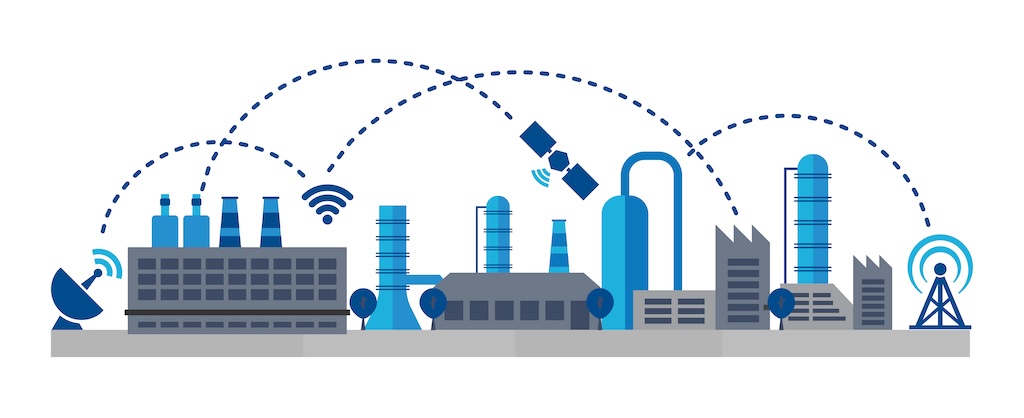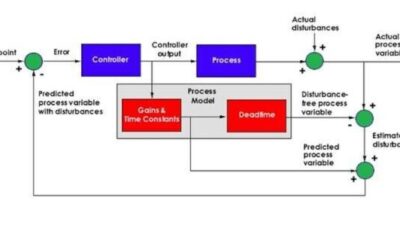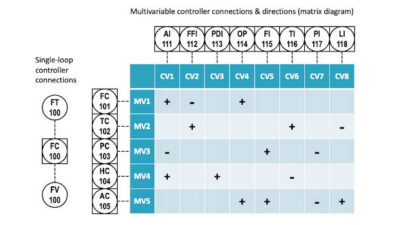Modern automation solutions are already untethering the control system from its hardware constraints, enabling operations teams to drive more flexible projects and operations. See four benefits of software-defined control systems.

Learning Objectives
- Understand software-defined control and the four benefits of software-defined control systems.
- Learn why software-defined control transition is happening now and where it’s at today?
- Review how less hardware creates more control over resiliency, scalability, flexibility and extensibility.
Software-defined control insights
- Software-defined control has four key benefits for industrial control systems.
- The software-defined control transition is happening now. Learn why, where it’s at today and how hyperconverged infrastructure (HCI) and Ethernet Advanced Physical Layer (Ethernet APL) are helping.
- Less control system hardware creates more control over resiliency, scalability, flexibility and extensibility.
Today’s process and hybrid manufacturers face a different set of challenges than they did five or ten years ago, and software-defined control systems are helping. Companies are making commitments to increase sustainability, even going so far as to set net zero goals to be reached within the next few years. Simultaneously, a dynamic global marketplace has forced manufacturers to be more flexible to meet the ever-shifting needs of their customers.
To accomplish these goals, companies need easy access to data, a journey they are undertaking by evolving toward a vision of boundless automation, where data moves seamlessly from the intelligent field, through the edge and into the cloud. Teams need easy access to data to drive the productivity and operational agility that will help them meet their goals, but legacy control technologies are more likely to silo data than to free data use. This disparity is prompting many operations teams to consider new projects to replace their aging infrastructure, but traditional expansion and modernization projects can be complex and expensive.
Software-defined control technology is a model that will ultimately make projects easier to execute and more cost-effective by eliminating built-for-purpose control hardware for more flexible, scalable, future-proofed operations. Consequently, understanding software-defined control will be essential to navigating the future of automation.
Why software-defined control for industrial control systems?
Today, when an operations team wants to expand or modernize its automation system, it typically must purchase and install a variety of new hardware components. Often the team needs to purchase specific industrial hardware controllers, and then house them in built-for-purpose cabinets. They also purchase the new I/O necessary to run operations, and they need a network layer to accommodate all the new equipment.
Software-defined control will eliminate the hardware complexity of existing automation systems. Instead of built-for-purpose hardware, teams should be able to execute containerized control workloads on many different hardware platforms. One likely deployment environment for software-defined workloads is delivered via hyperconverged infrastructure (HCI), with the control system operating as a redundant service on an HCI environment (Figure 1).

Four benefits of software-defined control systems for industrial control
The software-defined model for control will offer four key benefits:
-
Resiliency: The high-availability redundant control today’s operations demand will be further With multiple controllers running simultaneously on HCI, teams will be able to add additional automation workloads without facility shutdowns. Extending or adding automation will simply require deploying lightweight containerized control functions in the virtualized environment, developing the input-output (I/O) subsystem in the expansion area, and then auto sensing the field devices in the automation system. And if one containerized control function fails, HCI’s rapid failover features will empower the team to keep operating continuously and seamlessly. The flexibility provided by HCI allows for fault tolerance beyond the traditional 1:1 primary/backup architecture, including the potential to fail over to virtualized hosts in another physical location.
-
Scalability: The adaptability of control systems will fundamentally change when operations can add capacity without a complex hardware system redesign. Gone are the days of designing and setting up more cabinets for additional control With HCI, adding additional computing power is as simple as connecting another blade in a server cabinet.
-
Flexibility: Software-defined control simplifies project execution and ongoing operations. Instead of needing to calculate every device signal tag (DST) when expanding or modernizing operations, teams can safely estimate their requirements and adjust as needed. If the project team needs to make changes at any time that impact the capacity or type of I/O points, scaling the DSTs up or down simply requires a change in the software configuration. Teams are no longer limited by the decisions made in project execution, instead growing their automation alongside their operational needs.
-
Extensibility: Automation technology changes frequently. While teams would often like to take advantage of the new features available in control system updates, it can be difficult to do so when updates require production outages. Software-defined control will simplify the process. As new features are released by automation suppliers, operations teams using software-defined systems can update and change control software and strategies without interrupting production, updating one control function instance while its primary continues operations.
Why is the software-defined control transition happening now?
The technology building blocks to support software-defined control have been available for years, but automation users and suppliers are just beginning the journey to adapt their environments to use that technology. This shift has come just as new technologies in the field, such as Ethernet Advanced Physical Layer (Ethernet APL), are unlocking new data sources that will push current control hardware to (or beyond) its limits. Massive amounts of data will soon be coming into the control system from the intelligent field, including video, acoustic monitoring, and other areas. The most innovative companies are identifying ways to integrate that data into control strategies.
Eventually, every company will need a future-proofed architecture to ingest the exponential increase of data that will come from the intelligent field. Moving toward that future today will help teams ensure they are on a path to an automation platform that enables industry-leading operational performance (Figure 2).

Where is software-defined control technology today for industrial use?
The most advanced automation providers are already delivering on the earliest stages of the software-defined control vision. These companies are laying the groundwork with next-generation virtualization built on HCI, and they are complementing that innovation with more flexible controller technology.
The most flexible controllers today, though still driven by purpose-built hardware, incorporate many of the core concepts of software-defined control, such as flexible capacity to scale up or down based on operating requirements. These technologies are the foundation driving and supporting the future of software-defined control. Forward-thinking process and hybrid manufacturers are already integrating them into projects to prepare for a software-defined future.
Less industrial control system hardware, more control over resiliency, scalability, flexibility, extensibility
As more organizations embrace a vision of boundless automation for enhanced data mobility, the future of control will change rapidly. New control systems will be built on flexibility and software-defined solutions are a foundational element of that path forward. Manufacturers have long asked for automation solutions empowering them to pay only for what they need, when they need it. Software-defined control will put that power into their hands, and the earliest steps on that path can already be taken today.
Sean Saul is the vice president of the DeltaV Platform at Emerson. Edited by Mark T. Hoske, content manager, Control Engineering, CFE Media and Technology, [email protected].
KEYWORDS: Software-defined control, next-generation control system
CONSIDER THIS
What will your next-generation control system do?
ONLINE
Learn more from Control Engineering about control systems.




